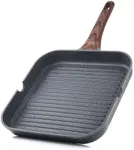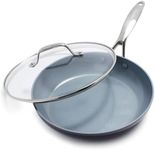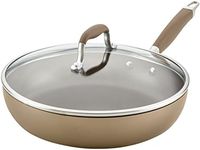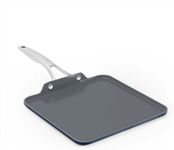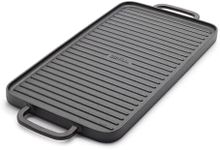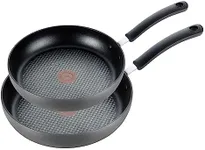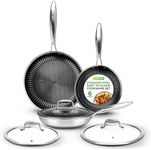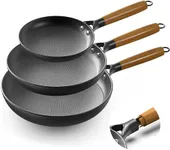Buying Guide for the Best Nonstick Pans For Gas Stoves
Choosing the right nonstick pan for your gas stove can make a significant difference in your cooking experience. Nonstick pans are designed to prevent food from sticking, making them easier to clean and ideal for cooking delicate foods like eggs and fish. When selecting a nonstick pan, it's important to consider several key specifications to ensure you get the best fit for your needs. Here are the key specs to look out for and how to navigate them.MaterialThe material of the nonstick pan affects its heat conductivity, durability, and weight. Common materials include aluminum, stainless steel, and hard-anodized aluminum. Aluminum pans are lightweight and heat up quickly, making them great for everyday use. Stainless steel pans are more durable and resistant to scratches but may not heat as evenly. Hard-anodized aluminum pans offer a balance of durability and even heating. Choose a material based on your cooking habits and preferences.
Nonstick CoatingThe type of nonstick coating determines how well the pan prevents food from sticking and how long it will last. PTFE (Teflon) coatings are popular for their excellent nonstick properties but can wear out over time. Ceramic coatings are a more eco-friendly option and can withstand higher temperatures but may not be as durable. Look for pans with multiple layers of nonstick coating for better performance and longevity. Consider your cooking style and how often you use the pan to decide which coating is best for you.
SizeNonstick pans come in various sizes, typically ranging from 8 to 14 inches in diameter. Smaller pans (8-10 inches) are ideal for cooking single servings or small portions, while larger pans (12-14 inches) are better for family meals or cooking larger quantities. Think about the types of dishes you frequently prepare and the number of people you usually cook for when choosing the size of your pan.
HandleThe handle of the nonstick pan should be comfortable to hold and stay cool during cooking. Handles can be made from materials like stainless steel, silicone, or plastic. Stainless steel handles are durable and oven-safe but can get hot. Silicone and plastic handles stay cooler but may not be oven-safe. Consider how you plan to use the pan and whether you need it to be oven-safe when selecting the handle type.
Compatibility with Gas StovesNot all nonstick pans are suitable for gas stoves. Look for pans with a flat, sturdy base that can withstand the direct flame of a gas stove. Pans with a thicker base tend to distribute heat more evenly, preventing hot spots and ensuring better cooking results. Check the manufacturer's specifications to ensure the pan is compatible with gas stoves.
Oven-Safe TemperatureIf you plan to use your nonstick pan in the oven, it's important to check its oven-safe temperature. This spec indicates the maximum temperature the pan can withstand without damage. Most nonstick pans can handle temperatures up to 350-500°F. Choose a pan with an oven-safe temperature that matches your cooking needs, especially if you frequently finish dishes in the oven.
Ease of CleaningOne of the main benefits of nonstick pans is their ease of cleaning. Some pans are dishwasher-safe, while others require hand washing to maintain the nonstick coating. Consider your cleaning preferences and the manufacturer's care instructions when selecting a pan. Dishwasher-safe pans offer convenience, but hand washing can extend the life of the nonstick coating.
